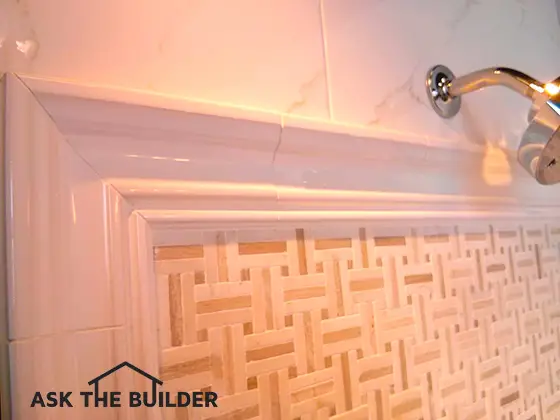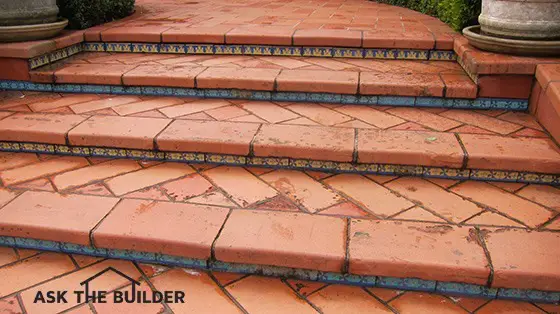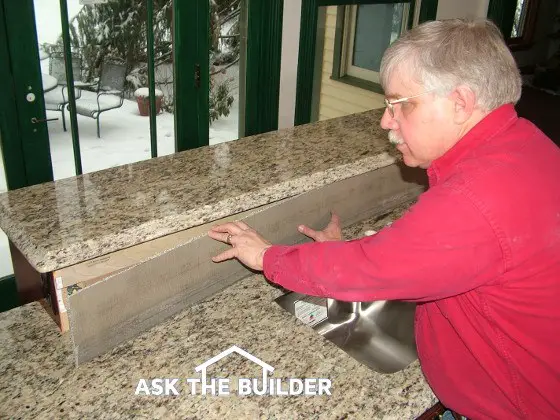Ceramic Tile

If you can stretch your budget, you can have fancy ceramic tile in a shower. © 2016 Tim Carter Builder
Ceramic wall and floor tile continues to grab the attention of people who build new homes. It is not surprising when you take the time to visit a real business that sells nothing but ceramic tile. The seemingly unlimited colors, patterns, textures and sizes of ceramic tile allow just about anyone to incorporate this man-made stone product into just about any room of their home.
Are all ceramic tiles made the same?
Although ceramic tile is durable in many respects, keep in mind that all ceramic tile is not created equal. Virtually every ceramic tile product is simply refined clay that has been baked in a kiln. A kiln is a large oven that bakes the soft clay tiles at a high temperature for a given amount of time. Depending upon the chemical composition of the clay, the amount of baking time and the baking temperature, you can have tiles that can withstand countless days outdoors in freezing weather or tiles that are relatively soft.

These outdoor steps make a bold statement with small pieces of trim tile. ©2017 Tim Carter
Can ceramic tile be used outdoors?
Knowing this, don't limit yourself to thinking that tile can just be used indoors. It is an ideal patio covering. I have used it for decorative front porch stoops. You can permanently adhere tile to pre-cast concrete walking pads to create stunning garden stepping stones.
But if you do decide to use ceramic tile outdoors, be sure these tiles also meet slip-resistance minimum requirements. Super-smooth glazed tile that gets wet from dew or rainfall can be dangerously slippery. Top-quality tile manufactures make special outdoor tile that has a very slightly gritty surface even though the tile is glazed. The invisible grit provides superb traction when tiles become wet for any reason. When you start to decide upon outdoor tile, talk to the salesperson and compare the slip resistance of tiles in the store when they are wet.
If you're putting ceramic tile in your home, check out my Ceramic Tile Installation Checklist to learn exactly what you should know about the process. Avoid making costly mistakes with the help of this document. I offer a 100% Money Back Guarantee.
Not only is the correct tile important, but so is the substrate to which it is applied. When applying tile indoors, you need to make sure it is attached to surfaces that will not move nor flex. Tile is very strong when you squeeze or compress it, but it is weak if you attempt to bend or pull it. Concrete is an excellent tile substrate if done right as it can be very strong and crack resistant.
CLICK or TAP HERE to get FREE quotes from local companies that can install your ceramic tile.

Installing concrete backer board
Years ago, ceramic tile craftsman applied tile directly to concrete substrate they created by applying cement stucco to a wire mesh fabric nailed to the wall studs. This is very labor intensive so now it makes better sense to nail or screw concrete board to wall studs. Concrete board is an excellent material as it does not deteriorate when it gets wet. If you use a substitute material, make sure it is 100 percent waterproof. Moisture resistant drywall (green board) is not waterproof, it is water resistant.
Floor tile years ago was also applied over concrete. Tile setters would chisel off the edges of floor joists to create a point. Blocking and small wood pieces would be then added in between the floor joists so the tile setters could pour a solid concrete base that was three inches thick in between joists and perhaps three quarters to one inch thick as it passed over the point of the joists. This solid base created a large bed of concrete that simply did not flex.
You can nail or screw cement board to wood subflooring, but you must be sure the floor joists are stiff enough not to flex. If they have too much flex, the tile will crack and the grout between tiles will crumble in a short amount of time.
Outdoor tile needs to be installed over concrete slabs that will not crack or separate. This can be easily achieved if the concrete slabs are a minimum of five inches thick and reinforced with one half inch thick steel reinforcing bars that are placed two feet on center in both directions. These steel rods should be in the middle of the slab so they are completely surrounded by the wet concrete.
Permanently bonding the tile to the substrate is vital. I prefer to use thinset for this task. Thinset is powdered cement with some fine silica sand mixed in. It can also contain powdered acrylic resins that increase the bonding characteristics of the thinset. Mix only as much thinset as you can trowel onto the substrate in 45 minutes. Once troweled onto the substrate, the tile should be placed in the wet thinset within five minutes. If you wait much longer, the thinset develops a skin that interferes with the bonding.
Column NH043